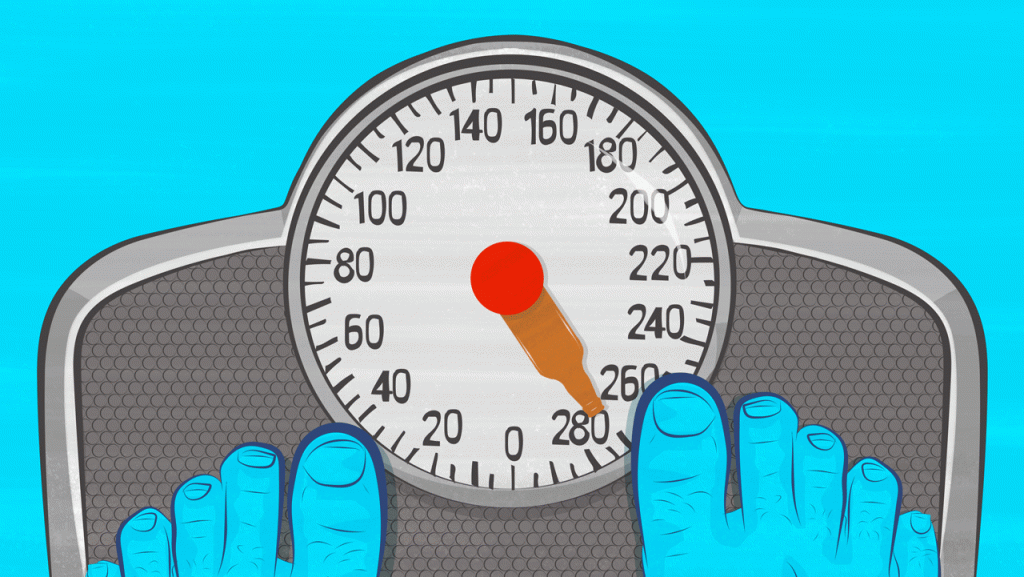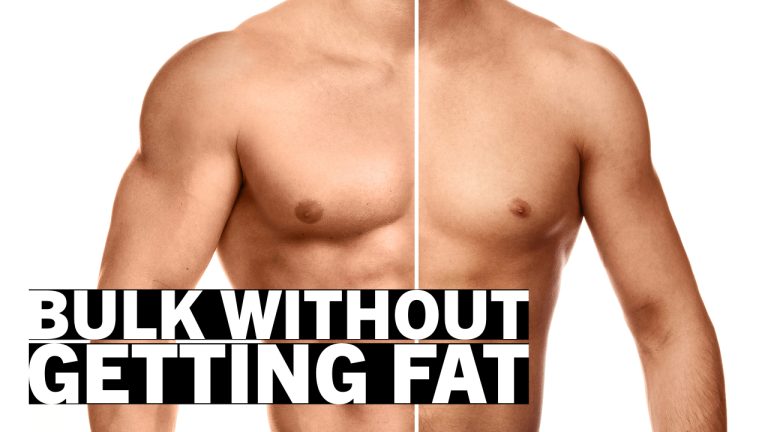How Much Fat Can You Lose in a Week? A Useful Guide

ListedFit is reader-supported. When you buy through links on our site, we may earn a small commission.
Embarking on a fat loss journey can be both exciting and daunting, as you strive to make healthy choices and achieve your goals.
Many people wonder just how much fat they can lose in a week. It’s important to understand that while losing weight is achievable, setting realistic expectations and ensuring a healthy approach is crucial to avoid potential risks and maximize results.
Quick Summary

The amount of fat you can lose in one week varies depending on factors such as your current weight, body composition, and the types of nutritional and exercise strategies you adopt.
Although you may see some impressive numbers being thrown around, especially on social media, remember that rapid weight loss can come with its own set of risks and may not necessarily lead to sustainable or healthy fat loss in the long run.
Key Takeaways
- Set realistic expectations for your fat loss journey and prioritize health over rapid results.
- The amount of fat loss achievable in a week varies depending on individual factors and strategies.
- Understand the risks associated with rapid weight loss and focus on sustainable, healthy approaches.
Contents
Understanding Fat Loss
In this section, we will help you understand the process of fat loss and how it differs from weight loss. We will explore the concepts of body fat and muscle mass, and how these two factors significantly affect the amount of fat you can lose in a week.
Body Fat vs Muscle Mass
It’s important to understand the difference between body fat and muscle mass in order to set realistic expectations for your fat loss journey. Losing weight doesn’t necessarily mean losing fat, as your overall body weight consists of both fat mass and muscle mass.
Body Fat refers to the amount of adipose tissue in your body, which stores energy and helps regulate body temperature, among other functions. While a certain percentage of body fat is necessary for your body to perform optimally, having too much body fat can lead to health issues.
Muscle Mass refers to the amount of muscle in your body, which is essential for strength, balance, and overall athleticism. Having a higher muscle mass can lead to an increase in your metabolic rate, making it easier to burn calories and lose excess body fat.
When aiming for fat loss, it’s crucial to focus on reducing your body fat percentage while preserving or increasing your muscle mass. You can achieve this by incorporating resistance training and a healthy, balanced diet that provides adequate protein to support muscle growth.
It’s generally accepted that losing between 1-2 pounds of fat per week is an appropriate, healthy goal to aim for, though this rate might vary depending on your individual circumstances. The maximum rate of fat loss may decrease as you get leaner.
For example, if you’re already pretty healthy with a body fat percentage between 15 and 20%, you can realistically lose 1 to 3% body fat in a week.
Remember, sustainable fat loss includes taking into consideration both the size of your calorie deficit (how much you eat compared to how much energy you burn) and the rate at which your body can safely lose fat. Patience and consistency are key in achieving your fat loss goals.
How Much Fat Can You Safely Lose?
When it comes to losing fat, it’s essential to keep in mind that safety should always be your top priority. It’s crucial to avoid unhealthy measures which might harm your body in the process. In this section, we’ll discuss the variables that influence fat loss, helping you create a plan tailored to your specific needs.
Variables Influencing Fat Loss
Age: As you grow older, your metabolism tends to slow down, making it more challenging to lose fat. However, incorporating regular exercise and a balanced diet into your lifestyle can help counteract this effect.
Lifestyle: Leading an active lifestyle can make a significant difference when it comes to fat loss. Engaging in regular physical activity like cardio exercises, strength training or even just walking, can help you burn calories and lose fat more effectively.
Starting Weight: Your starting weight is another critical factor to consider. Individuals with a higher starting weight will likely have higher total body weight, allowing them to lose more fat pounds per week compared to someone with a lower starting weight.
Total Body Weight: Aiming for a fat loss of 1% of your total body weight per week is generally considered a safe rate. This means the more you weigh, the more fat you can potentially lose per week.
Metabolism: Your metabolism plays a crucial role in determining how fast your body burns calories, which in turn affects how much fat you can lose. Keeping your metabolism up through regular exercise, eating nutritious meals and staying hydrated can help reach your fat-loss goals faster.
Plan: Having a well-structured plan in place will help you stay on track and achieve your fat loss goals more efficiently. Combine a healthy eating plan tailored to your needs with an exercise regime that fits your lifestyle.
By considering these variables and tailoring your approach, you can safely lose fat while maintaining your health and well-being.
Factors Affecting Healthy Fat Loss
Calorie Deficit and Diet
To lose fat effectively, you need to create a calorie deficit by consuming fewer calories than your body burns daily. Your body will then use stored fat for energy, leading to fat loss. However, it’s crucial not to go overboard with your calorie deficit, as this can cause your body to break down muscle instead of fat, which is not healthy.
The key to maintaining a healthy diet is balancing macronutrients (protein, carbohydrates, and fats) to ensure proper nutrition. Consider these pointers:
- Focus on consuming whole foods like fruits, vegetables, lean protein sources, and whole grains.
- Incorporate healthy fats, such as avocados, nuts, and olive oil, into your meals.
- Avoid excessive intake of processed and sugary foods to prevent unwanted weight gain and other health issues.
Exercise and Movement
Incorporating regular exercise and movement into your routine plays an important role in healthy fat loss. Both cardiovascular exercises and strength or resistance training can contribute to sustainable weight loss.
Cardiovascular exercises:
These activities help to burn calories and create a calorie deficit, which aids in fat loss. Some examples include:
- Running
- Swimming
- Cycling
- Dancing
Strength or resistance training:
Building muscle with strength training increases your metabolism, which helps you burn more calories at rest. This allows for more effective fat loss. Examples of strength training exercises include:
- Weightlifting
- Bodyweight exercises (push-ups, pull-ups, squats)
- Resistance bands
In conclusion, to achieve healthy fat loss, it’s crucial to create a calorie deficit through a balanced diet while incorporating both cardiovascular exercises and strength training into your routine. Remember to keep your goals realistic and focus on maintaining a healthy lifestyle for lasting results.
Nutritional Strategies for Fat Loss
Lean Protein and Healthy Fats
Incorporating lean protein and healthy fats into your diet can help you achieve your fat loss goals. Consuming lean protein sources, such as chicken, fish, legumes, and low-fat dairy, helps you stay full and promotes muscle growth. Increasing your protein intake can also boost your metabolism, which aids in burning off fat.
Include healthy fats like avocados, nuts, and olive oil in your meals. These fats not only provide essential fatty acids but also help you feel satisfied, which can reduce cravings and prevent overeating.
Fibre and Nutrient-Dense Foods
Eating fibre-rich and nutrient-dense foods is vital to a sustainable fat loss plan. High-fibre foods, like whole grains, fruits, and vegetables, can help you feel full and satisfied while providing essential nutrients.
Here are some nutrient-dense foods to include in your diet:
- Leafy greens: kale, spinach, and Swiss chard
- Berries: blueberries, raspberries, and strawberries
- Whole grains: brown rice, quinoa, and whole-wheat bread
Additionally, remember to drink plenty of water to stay hydrated and aid in digestion.
Managing Cravings
Cravings can be a major obstacle when trying to lose fat. To manage them:
1.Plan your meals: Having a meal plan can help you stay on track with your nutritional goals and prevent impulsive food choices.
2.Don’t skip meals: Skipping meals can lead to overeating and poor food choices later in the day. Stick to regular meal times to keep your hunger and cravings under control.
3.Reach for nutrient-dense snacks: When cravings strike, opt for healthy, nutrient-dense options like a handful of nuts, yoghurt with fruit, or a small serving of dark chocolate to curb your appetite without sabotaging your fat loss goals.
By following these nutritional strategies, you can support your body’s fat loss efforts while maintaining a friendly, enjoyable, and sustainable approach to your diet.
Risks of Rapid Weight Loss
Loss of Muscle Mass
When trying to lose weight quickly, you may inadvertently cause your body to burn muscle for energy. Rapid weight loss often involves drastically cutting calories, which can lead to a loss of muscle mass and even weaken your bones. To prevent this, try to aim for a more moderate weight loss rate of about 1 to 2 pounds per week.
Mental Health Impacts
Rapid weight loss can take a toll on your mental health. Drastic calorie restriction may cause mood swings, irritability, and even anxiety or depression. The stress of seeing your body change too quickly can also affect your self-esteem and body image. To maintain a positive mindset during your weight loss journey, focus on adopting healthier lifestyle habits and setting realistic goals.
Physical Health Concerns
There are several physical health concerns associated with rapid weight loss:
- Gallstones: Losing weight too quickly increases your risk of developing gallstones, which are painful and may require medical intervention.
- Nutrient deficiencies: When you reduce your calorie intake, you might miss out on important nutrients your body needs. This can lead to fatigue, dizziness, and a weakened immune system.
- Rebound weight gain: Quick weight loss often leads to weight regain because it’s difficult to maintain the strict calorie restrictions required for rapid results. Keep in mind that gradual, steady weight loss is more likely to result in long-term success.
Remember, taking the time to achieve a healthy and realistic weight loss rate will likely lead to better overall health and a more sustainable lifestyle.
Frequently Asked Questions
How fast can a person lose body fat?
Everyone’s body is different, so the rate at which you lose body fat will vary. However, a general rule to follow is losing 1% of your total body weight per week.
Keep in mind that this includes both fat mass and lean mass, so it’s essential to maintain a healthy diet and exercise routine to preserve muscle.
What is the recommended safe amount of fat loss per week?
A safe and sustainable amount of fat loss per week is around 1 to 2 pounds (0.45 to 0.9 kg). Losing weight too quickly can lead to muscle loss, fatigue, and other adverse health effects.
It’s crucial to find a balance between losing fat and maintaining your overall health.
How does intermittent fasting affect fat loss?
Intermittent fasting can help promote fat loss by giving your body a set window of time to consume calories which can lead to an overall calorie deficit.
However, the key to successful fat loss lies in combining intermittent fasting with a healthy diet that provides essential nutrients and a regular exercise routine.
Does gender impact the rate of fat loss?
Yes, gender can play a role in the rate of fat loss. Generally, men tend to have a higher basal metabolic rate (BMR) and more lean muscle mass than women, which can result in faster fat loss.
However, individual factors such as age, activity level, and genetics also significantly impact fat loss rates.
Can one preserve muscle while losing fat rapidly?
Preserving muscle while losing fat rapidly might be challenging, but it is possible. To maintain muscle mass, ensure a sufficient protein intake in your diet, and engage in regular strength training exercises.
It is also essential to keep the rate of fat loss within a safe range, as losing weight too quickly can lead to unwanted muscle loss.
What role do fat burning foods play in weekly fat loss?
Fat burning foods can support your fat loss journey by increasing your metabolism and helping your body burn calories more efficiently.
However, no single food can directly cause fat loss. A balanced diet, along with regular exercise, is the best approach for effective and sustainable weight loss.
Author
Latest entries
 GearJuly 20, 2024Headphones and Earbuds – Tried and Tested!
GearJuly 20, 2024Headphones and Earbuds – Tried and Tested! FitnessAugust 19, 2023Yohimbe vs Yohimbine: A Quick Comparison Guide
FitnessAugust 19, 2023Yohimbe vs Yohimbine: A Quick Comparison Guide AshwagandhaJune 16, 2023Is Ashwagandha Good for Working Out? Key Benefits Explored
AshwagandhaJune 16, 2023Is Ashwagandha Good for Working Out? Key Benefits Explored Sports HeadphonesMay 25, 2023Why Your EarBuds Keep Falling Out – Quick and Easy Solutions
Sports HeadphonesMay 25, 2023Why Your EarBuds Keep Falling Out – Quick and Easy Solutions
Affiliates:
This post may contain affiliate links that at no additional cost to you, the site may earn a small commission. We only recommend products we would use ourselves and all opinions expressed on this site are our own.
General Advice:
The information provided in this article is for general informational purposes only. It is not intended as a substitute for professional advice. Always consult with a qualified healthcare professional before starting any new diet, exercise program, or making changes to your health routine.
Accuracy Advice:
While we strive to provide up-to-date and accurate information, the content in this article may not reflect the most current research or medical guidelines. We encourage readers to do further research and consult with professionals for more personalized advice.
Our Recommendations:
The products and services mentioned in any of our articles are recommended based on our independent research and personal experience. We are not sponsored by any company. We aim to suggest products and services we believe are of high quality and could be beneficial to our readers.






